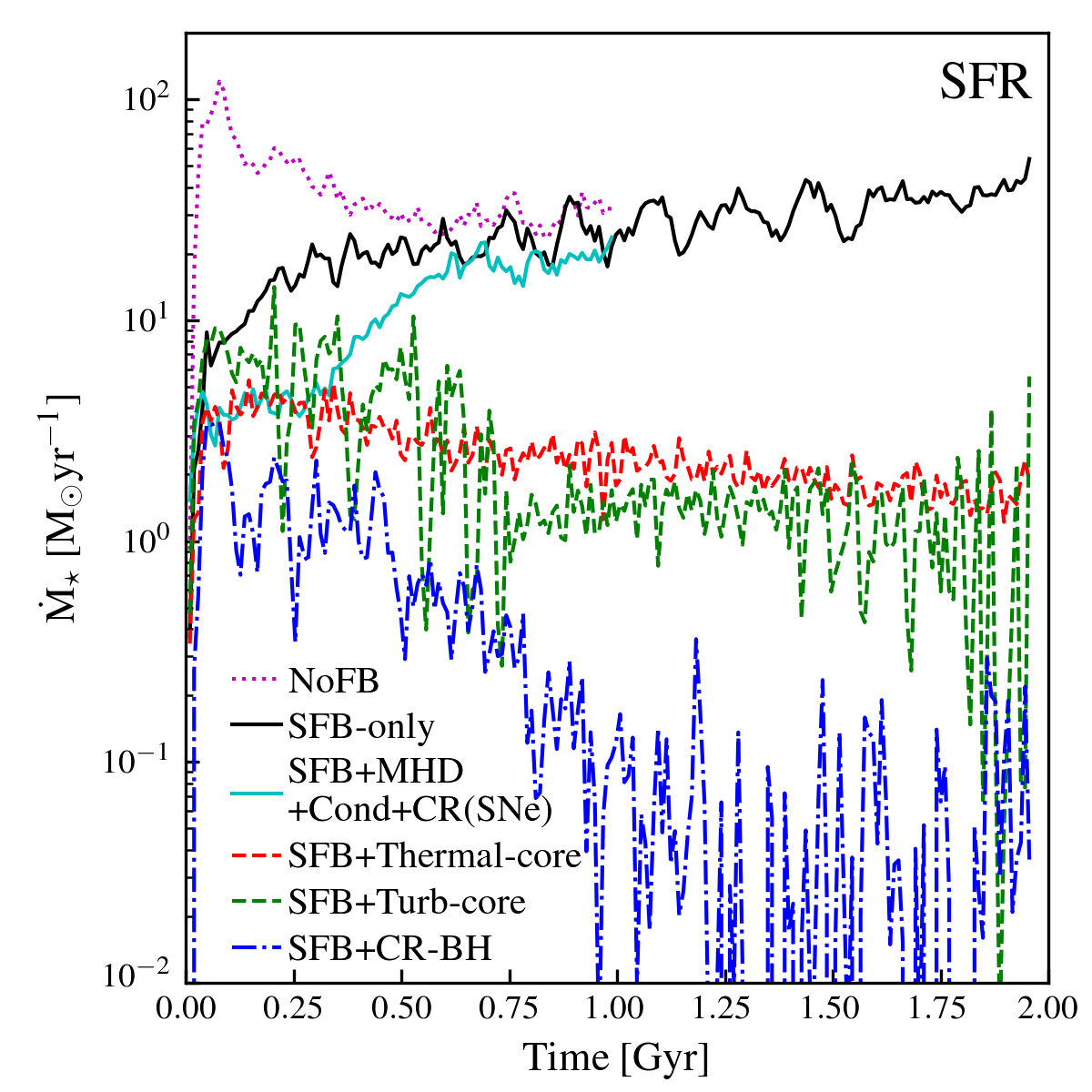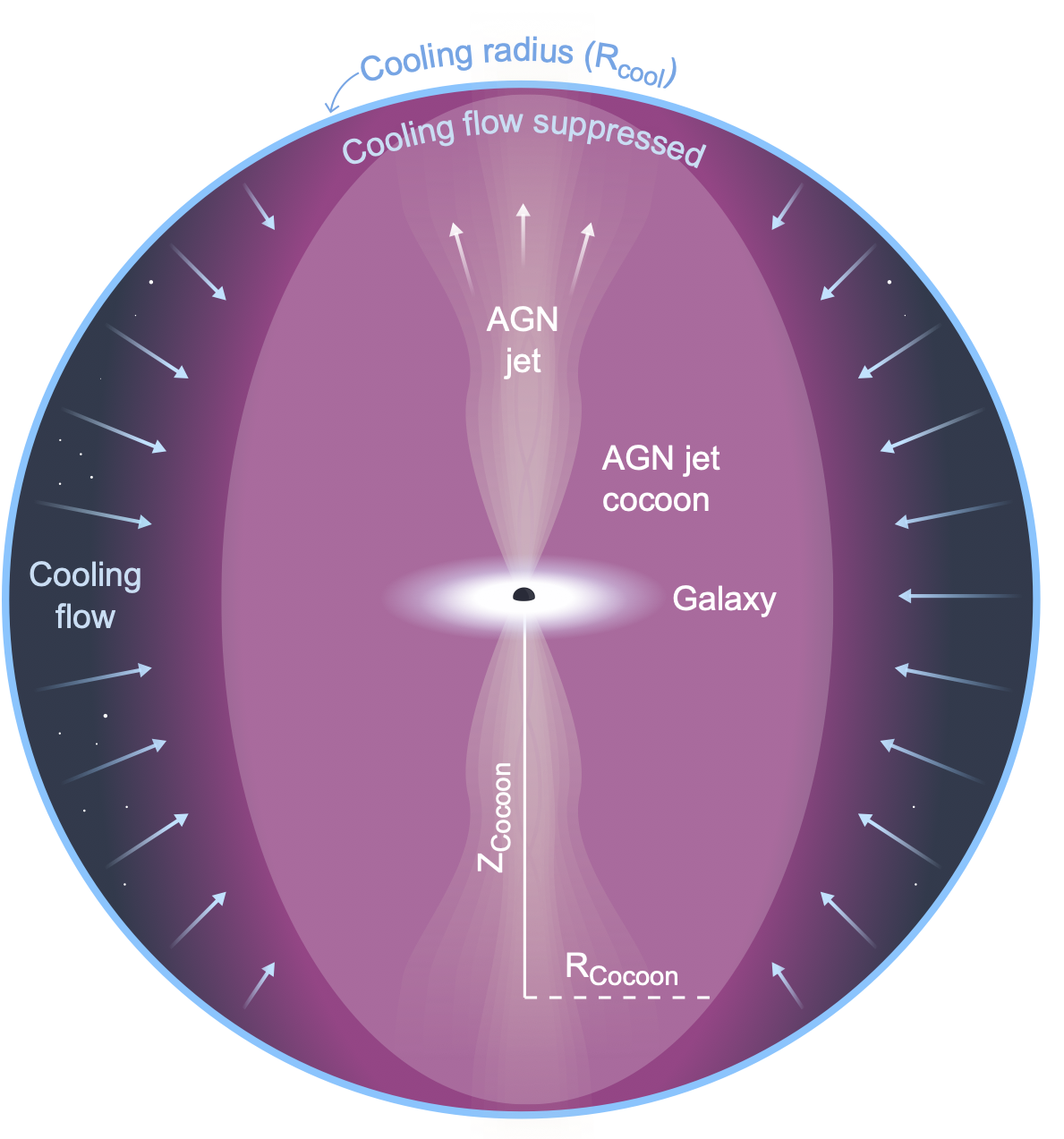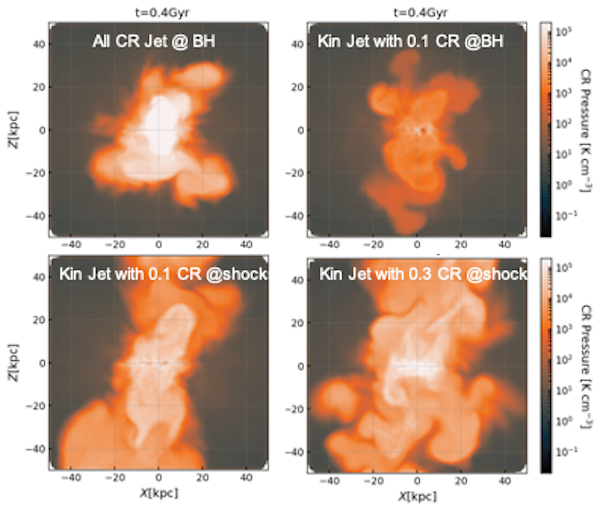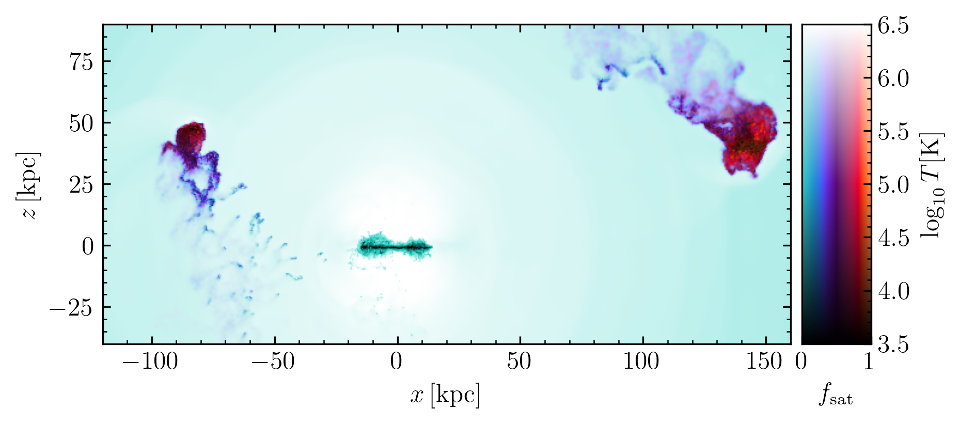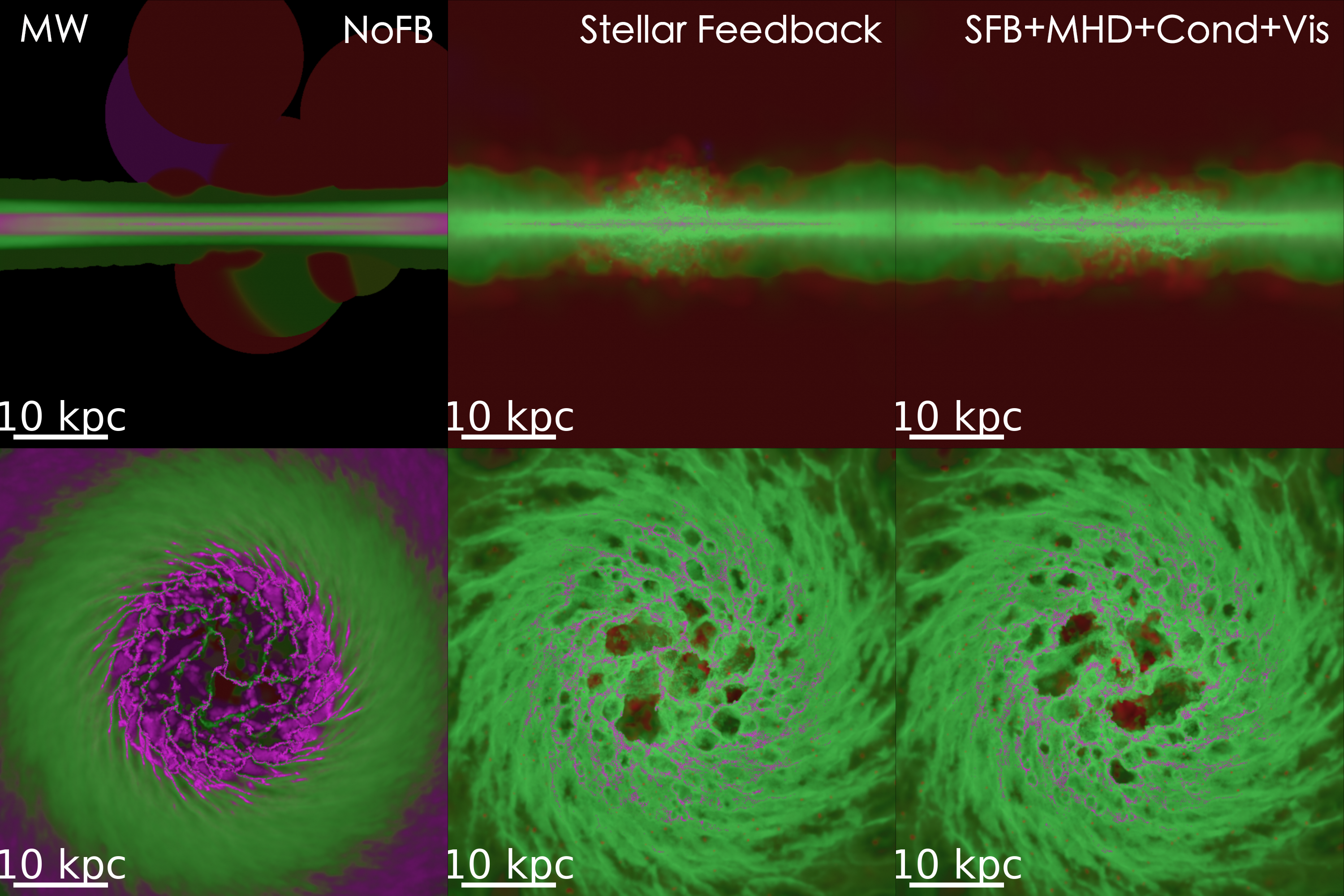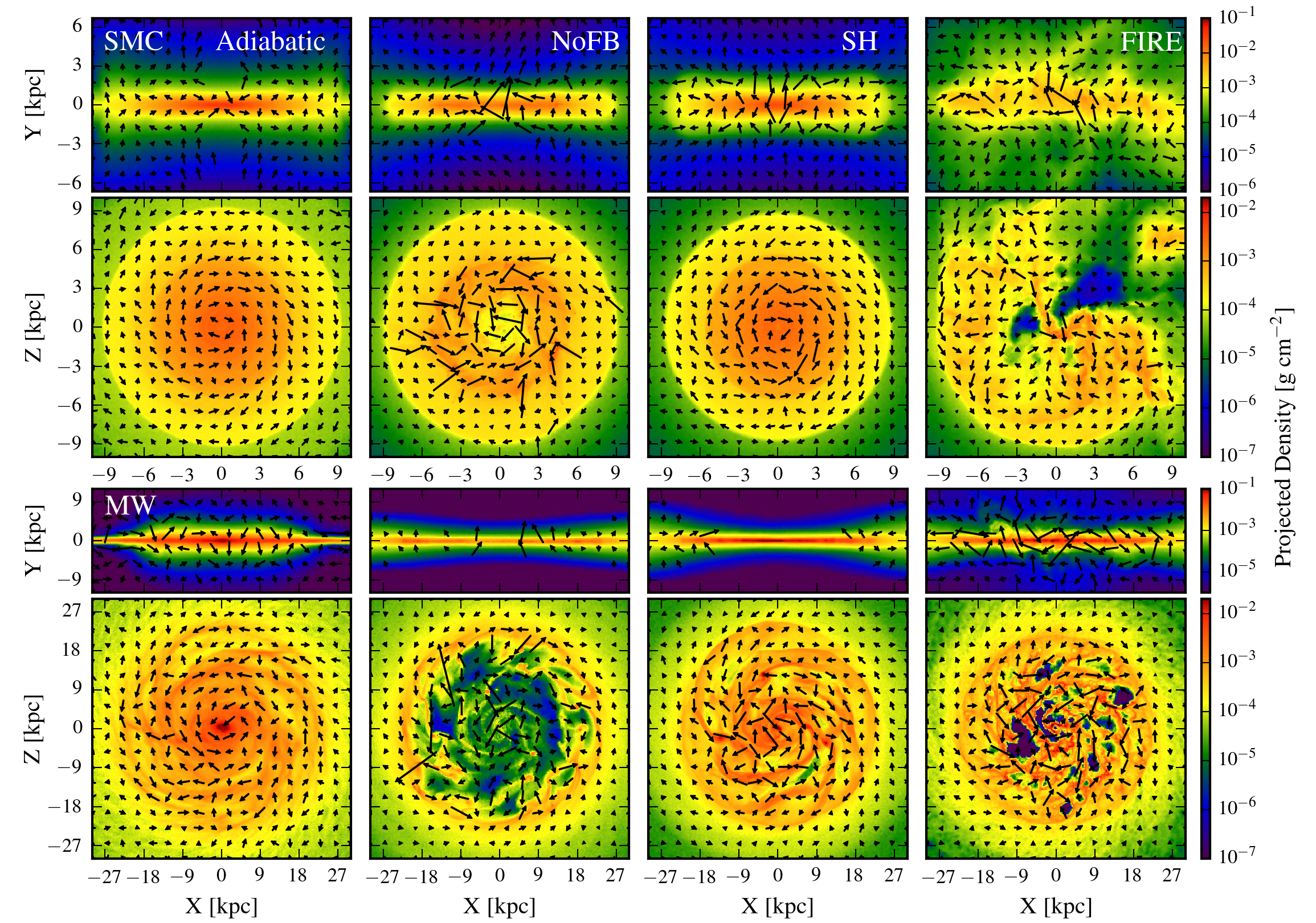Cooling Flow Problem
How to keep massive galaxies quenched and remained "red and dead" over a large portion of cosmic time?
What Types of AGN Jet Quench?
CR jets require less fine tuning
How Satellites Populate the Cold Phase of MW Halos
Mixing layer induced cooling is very important
The results are published in: MNRAS Vol. 527, Issue 1, p.265-280
Fluid Microphysics & Galaxy Evolution
Stellar feedback has the dominating effects
Stellar Feedback Alters Magnetic Fields
Stellar feedback strongly alters the amplification and morphology of galactic magnetic fields
Diecrete Effects in Stellar Feedback
Individual supernovae, hypernovae, and IMF sampling in dwarf galaxies
AGN Jets Regulates BH Accretion
The isotropic component of the jet cocoon momentum flux is regulated to match the inflowing momentum flux at the Bondi radius.
Bridging Scales for Galaxy to BH Horizon
The first publication of the project, led by Hyerin Cho, presented a novel multi-zone computational method. The method is based on the general relativistic magnetohydrodynamic (GRMHD) code KHARMA, allowing us to span seven orders of magnitude in spatial scale. This enables the simulation of magnetized accretion onto a non-spinning supermassive black hole (SMBH) from an external medium with a Bondi radius over 2x105 times larger than the gravitational radius. The energy feedback from the accretion flow to the external medium is at a level of approximately 10−2 dMBH/dt c2 ∼ 5×10−5 dMBondi/dt c2.
The results are published in: arXiv: 2310.19135
